How conservation photography is fighting climate change.

A great photograph can capture the world’s attention – it freezes a moment, grabs a feeling, and makes itself known. And now, on this ever-changing blue planet – the power of the photograph seems needed more than ever.
Standing as two of the most influential wildlife photographers in the industry, Paul Nicklen and Cristina Mittermeier have amassed a portfolio of images that have captivated global audiences. From face-to-face encounters with inquisitive leopard seals on the Antarctic Peninsula, to documenting the unique existence of “sea wolves” in British Columbia, collectively through their imagery they have revealed hidden worlds and shattered misconceptions. As conservation photographers – a phrase that Cristina herself coined – they have used photography as a platform to step up the fight to protect the environment.
Through diving in some of the most extreme locations, “we have seen change that has been escalating and intensifying with each passing year,” Nicklen told SD OCEAN PLANET. “Over the last two decades, I have seen the sea ice in the Arctic literally diminish, [and] in the next 20 years, there will be no sea ice in the summer months.”
Paul and Cristina have witnessed huge numbers of wildlife suffer due to climate change. “We saw hundreds of marine mammals, including orcas, whales, seals, and otters die through the ingestion of toxic algae, or by starvation from schooling fish being out of reach due to migrating to cooler waters.” These impacts are due to temperatures rising by as much as seven degrees in some places.
Bu hikaye Scuba Diver dergisinin SDOP Special Edition sayısından alınmıştır.
Start your 7-day Magzter GOLD free trial to access thousands of curated premium stories, and 9,000+ magazines and newspapers.
Already a subscriber ? Giriş Yap
Bu hikaye Scuba Diver dergisinin SDOP Special Edition sayısından alınmıştır.
Start your 7-day Magzter GOLD free trial to access thousands of curated premium stories, and 9,000+ magazines and newspapers.
Already a subscriber? Giriş Yap
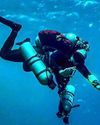
The Making Of A World Record-Breaking Diver
Descending more than 300 metres into the depths of the ocean may sound like a daunting prospect to even the most seasoned diver. But to one man, it was just another a challenge that he set for himself to see how far he was able to push the envelope.
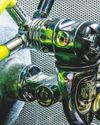
Risk Mitigation: Hose Failure
An unexpected outcome
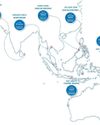
Top 10 Wrecks Of Asia-Pacific
We present a curated list of the top 10 most famous wrecks found in the Asia-Pacific region, listed in no particular order
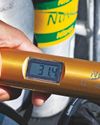
From The Medical Line: Diving After DCS
DAN medical information specaialists and researchers answer your dive medicine questions

Cave Exploration: Beginning With The End In Mind
Building complex adventures on simple skills
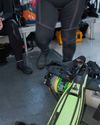
Dive Slate: Stay Safe On Board
When preparing for a dive, safety is at the top of the list – checking gear, learning potential site hazards and discussing procedures with your divemaster or buddy.

101 Tips On Becoming A Better Tek Diver
Technical diving takes divers beyond the typical recreational scuba diving limits, opening up many new and exciting possibilities.
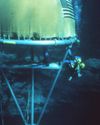
TECHNICAL DIVING TIMELINE (1660–1999)
It’s fair to say that the emergence of “technical diving” in the late 1980s, that is, the introduction of mixed gas technology, and later mixed gas rebreathers to the sport diving community, represented the culmination of hundreds of years of scientific discovery and technological development.

FLYING AFTER DIVING
From the Safety Stop

DIAGNOSING DECOMPRESSION ILLNESS
Incident Insight